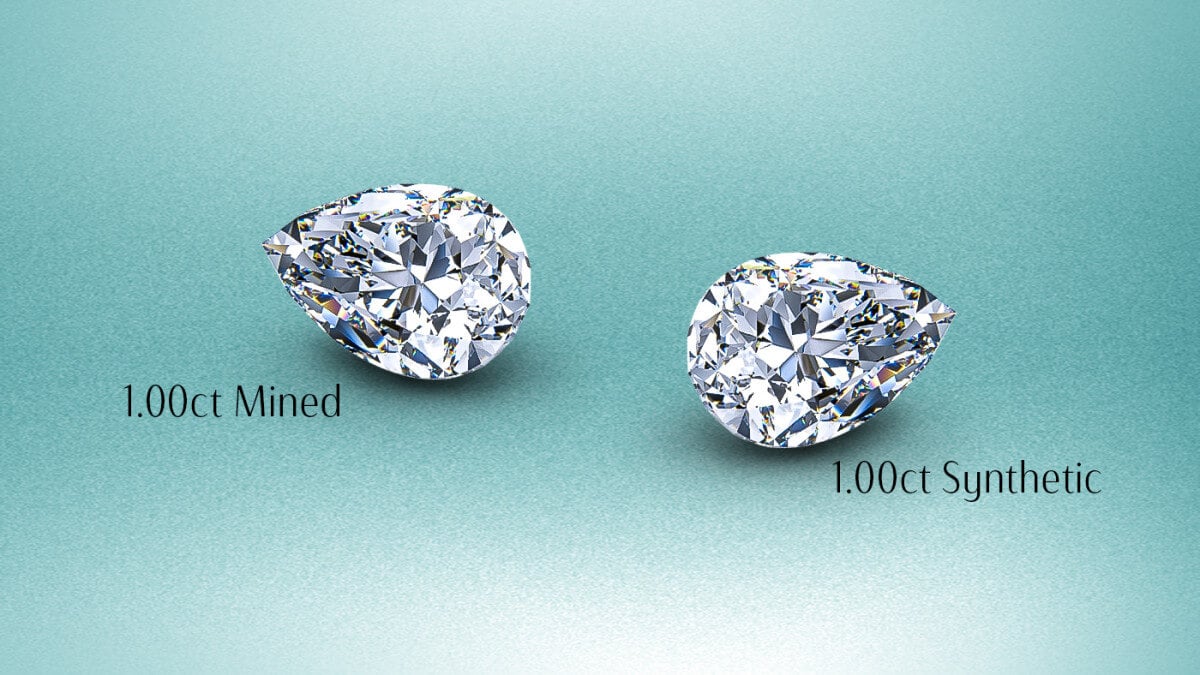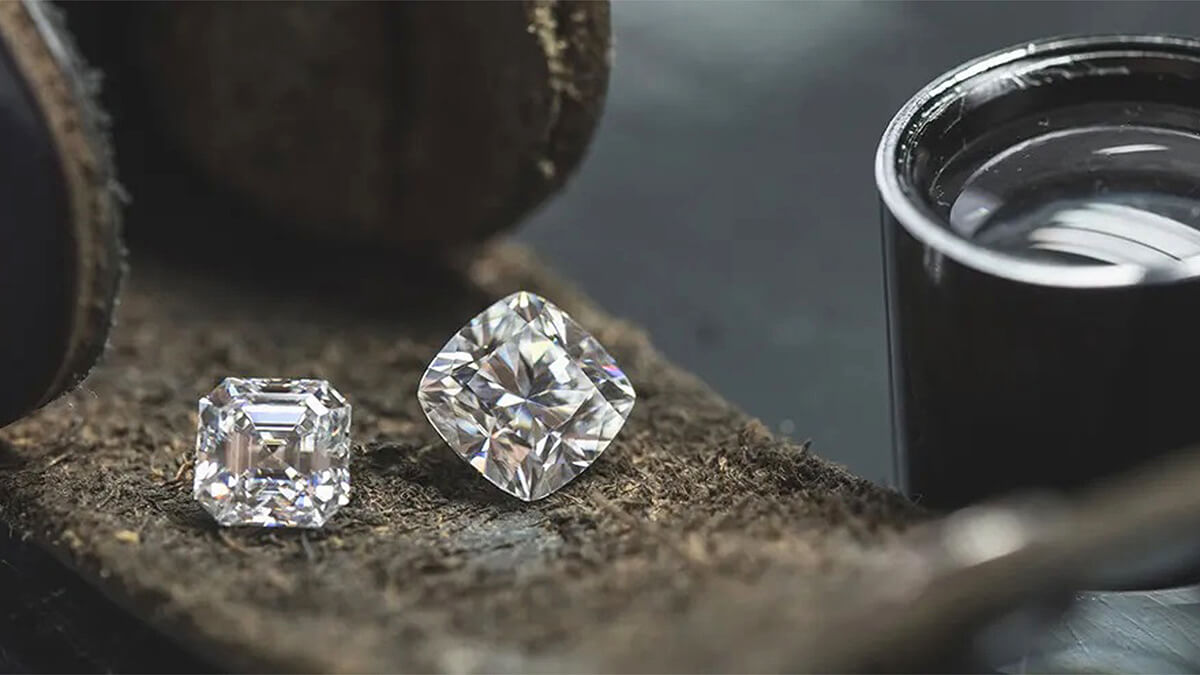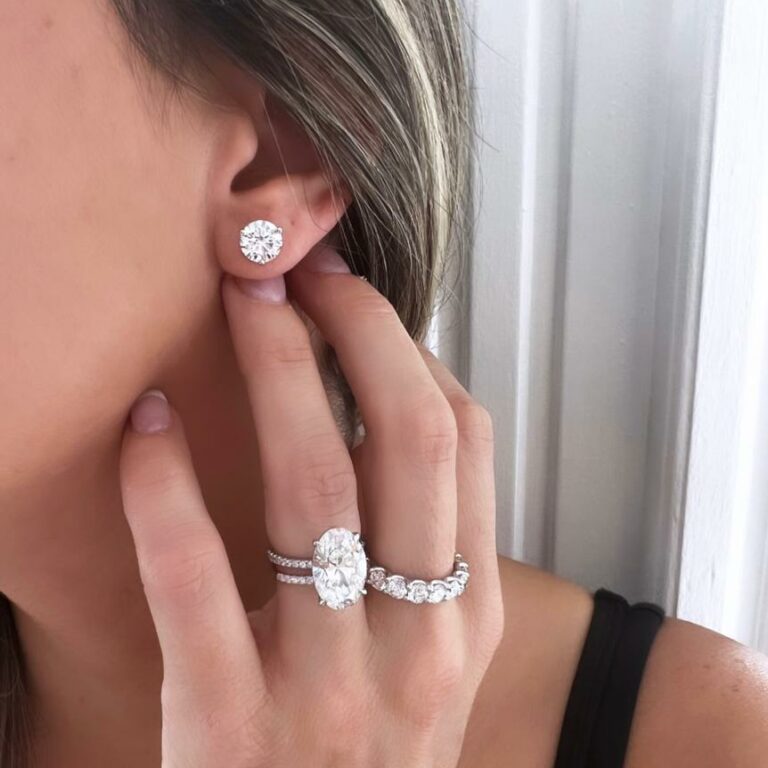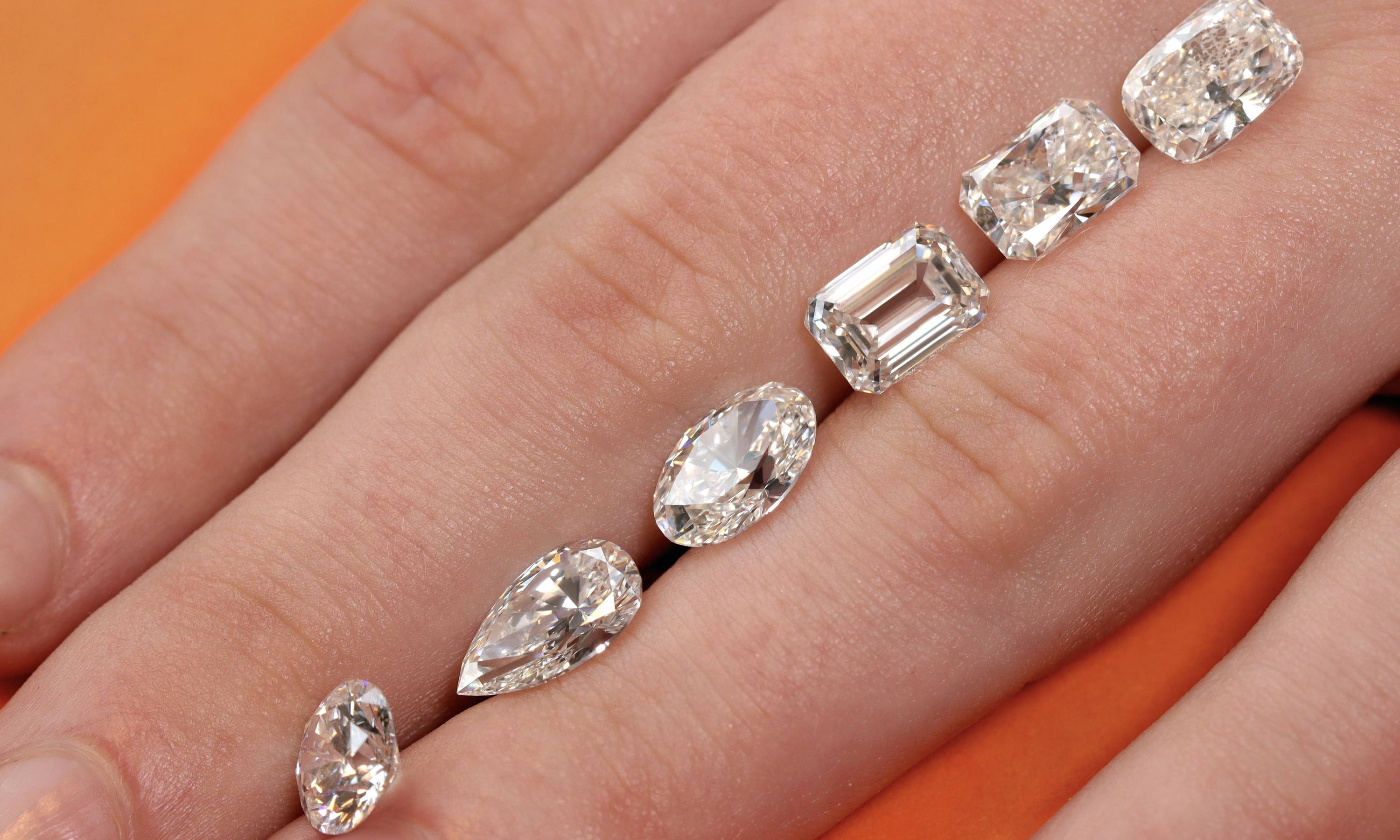
1. Introduction
What are lab made diamonds?
Have you ever wondered about the origin of those sparkling diamonds adorning luxurious jewelry pieces? While natural diamonds have long been revered for their rarity and beauty, a new contender has emerged in the form of lab-made diamonds. These man-made gems are created in highly controlled laboratory environments, replicating the intense heat and pressure conditions found deep within the Earth’s mantle. The result? Diamonds that are visually and chemically indistinguishable from their natural counterparts.
Growing popularity of lab diamonds
Over the past decade, lab-made diamonds have experienced a meteoric rise in popularity, challenging the traditional diamond market. As consumers become more environmentally conscious and cost-savvy, these lab-grown gems offer an attractive alternative to natural diamonds. With their ethical sourcing, eco-friendly production, and often lower price tags, it’s no wonder that lab diamonds are captivating the hearts and minds of jewelry enthusiasts worldwide.
2. Benefits of Lab Made Diamonds
Cost-effective
One of the most significant advantages of lab-made diamonds is their cost-effectiveness. Traditional diamond mining is an expensive and labor-intensive process, contributing to the high prices of natural diamonds. In contrast, lab diamonds are created through advanced technological processes, resulting in substantial cost savings. On average, a lab-grown diamond can cost 30-40% less than its mined counterpart, making it an appealing option for those seeking a beautiful and affordable gemstone.
Ethically sourced
The diamond industry has long been plagued by concerns over unethical mining practices, human rights violations, and conflicts fueled by the trade of “blood diamonds.” Lab-made diamonds effectively eliminate these ethical dilemmas as they are created in controlled environments, free from the complexities and controversies associated with traditional mining operations. By choosing a lab diamond, consumers can enjoy peace of mind knowing their purchase is not contributing to any unethical practices.
Environmentally friendly
In addition to their ethical advantages, lab-made diamonds are also more environmentally friendly than mined diamonds. Traditional diamond mining has a significant environmental impact, involving extensive land disruption, water pollution, and high carbon emissions. In contrast, the production of lab diamonds is a relatively clean process, consuming far less energy and resources. Many lab diamond manufacturers are also committed to sustainable practices, further reducing their environmental footprint.
3. Lab vs Natural Diamonds
Composition and properties
From a scientific standpoint, lab-made diamonds and natural diamonds are virtually identical. Both are composed of pure crystallized carbon atoms arranged in a specific cubic structure. They share the same chemical, physical, and optical properties, including their hardness, refractive index, and thermal conductivity. In fact, even skilled gemologists struggle to distinguish between the two types of diamonds without specialized equipment.
Visual differences
To the naked eye, lab-made diamonds and natural diamonds are indistinguishable. They exhibit the same brilliance, fire, and scintillation, owing to their identical crystal structures. However, upon closer inspection with specialized tools, some subtle differences may be detected. Natural diamonds often contain minor imperfections or inclusions that are byproducts of their formation deep within the Earth’s crust. In contrast, lab diamonds tend to have fewer inclusions due to the controlled environment in which they are created.
Value and pricing
While buy lab made diamonds and natural diamonds are visually and chemically alike, there is a significant difference in their value and pricing. Natural diamonds are priced based on their rarity, with factors such as size, color, clarity, and cut contributing to their overall value. In contrast, lab diamonds are more affordable because their production is not limited by scarcity. However, it’s important to note that the resale value of lab diamonds may be lower than that of natural diamonds due to their perceived “artificial” nature.
4. Choosing a Lab Diamond
The 4Cs (cut, color, clarity, carat)
When selecting a lab-made diamond, it’s essential to consider the same factors that apply to natural diamonds: the 4Cs. These include:
- Cut: The cut of a diamond refers to its proportions, symmetry, and ability to reflect light. A well-cut diamond will exhibit optimal brilliance and fire.
- Color: Diamonds are graded on a color scale ranging from D (colorless) to Z (light yellow or brown). Higher color grades (closer to D) are rarer and more valuable.
- Clarity: This factor refers to the absence or presence of inclusions or blemishes within the diamond. Diamonds with fewer inclusions are graded higher for clarity.
- Carat: The carat weight measures the size and mass of a diamond. Generally, larger diamonds are rarer and more valuable.
When evaluating lab diamonds, it’s crucial to consider these 4Cs to ensure you’re getting the best value for your investment.
Fancy colored lab diamonds
In addition to colorless diamonds, lab-made diamonds are also available in a range of fancy colors, such as yellow, pink, blue, and even rare hues like red or green. These colored diamonds are created by introducing specific elements or compounds during the growth process, altering the crystal structure and resulting in unique and vibrant hues. Fancy colored lab diamonds offer a more affordable alternative to their natural counterparts, which can be exceptionally rare and expensive.
Certification and grading
Like natural diamonds,buy lab made diamonds should be accompanied by a certification from a reputable gemological laboratory. These certifications provide detailed information about the diamond’s characteristics, including its 4Cs, measurements, and any notable inclusions or treatments. Major gemological institutes, such as the Gemological Institute of America (GIA) and the International Gemological Institute (IGI), offer grading and certification services for lab diamonds, ensuring transparency and quality assurance.
5. Reputable Lab Diamond Vendors
Online retailers
With the rise of e-commerce, many reputable online retailers have emerged as go-to destinations for purchasing lab-made diamonds. These platforms offer a wide selection of lab diamonds in various sizes, cuts, colors, and price ranges. Some notable online retailers include:
- Blue Nile
- Brilliant Earth
- James Allen
- Clean Origin
- Ritani
Online retailers often provide detailed product information, high-resolution imagery, and customer reviews, allowing you to make an informed decision from the comfort of your home.
Brick-and-mortar stores
While online retailers offer convenience, some consumers may prefer the traditional experience of visiting a brick-and-mortar store. Many reputable jewelry chains and independent retailers now offer lab-made diamond collections, providing the opportunity to view and try on pieces in person. Some popular options include:
- Helzberg Diamonds
- Kay Jewelers
- Jared
- Local independent jewelers
When visiting a physical store, it’s essential to work with knowledgeable and trustworthy jewelers who can guide you through the selection process and answer any questions you may have.
Things to look for
Regardless of whether you shop online or in-store, there are certain factors to consider when choosing a reputable lab diamond vendor:
- Certifications and grading reports: Ensure that the vendor provides certifications from recognized gemological institutes for their lab diamonds.
- Return and exchange policies: Look for vendors with flexible return and exchange policies, allowing you to make an informed decision without risk.
- Customer reviews and ratings: Read customer reviews and ratings to gauge the vendor’s reputation and service quality.
- Pricing transparency: Reputable vendors should provide clear and upfront pricing information, allowing you to compare options and make an informed decision.
- Customer support: Evaluate the vendor’s customer support channels, such as live chat, phone support, or email, in case you need assistance during or after your purchase.
6. Budget and Pricing
Cost savings of lab diamonds
One of the primary advantages of lab created diamonds is their cost-effectiveness compared to natural diamonds. On average, lab diamonds can cost 30-40% less than their mined counterparts, making them an attractive option for those seeking a beautiful and affordable gemstone. This cost savings can be attributed to the streamlined production process and the absence of mining and exploration expenses.
Financing options
While lab diamonds are generally more affordable than natural diamonds, they can still represent a significant investment, especially for larger or higher-quality stones. Many reputable vendors offer financing options to help make lab diamond purchases more accessible. These may include:
- In-house financing plans: Some retailers offer their own financing programs, allowing customers to pay for their purchase over time with manageable monthly installments.
- Third-party financing: Vendors may partner with external financing companies to provide various payment plans and options to suit different budgets and credit profiles.
- Credit card financing: Customers can also utilize their credit card’s financing options, such as 0% interest for a certain period or flexible payment plans.
It’s essential to thoroughly review the terms and conditions of any financing option, including interest rates, fees, and repayment schedules, to ensure you make an informed decision.
Investment potential
While lab-made diamonds are generally not considered investment pieces like natural diamonds, they can still hold value over time. As with any luxury item, the investment potential of a lab diamond depends on various factors, such as:
- Quality: Higher-quality lab diamonds with exceptional cut, color, and clarity may retain value better than lower-quality stones.
- Rarity: Fancy colored lab diamonds or unique cuts may be rarer and, therefore, more valuable in the long run.
- Market demand: As lab diamonds gain wider acceptance and popularity, their value may appreciate over time.
- Certification: Lab diamonds with reputable certifications from recognized gemological institutes are more likely to hold their value.
It’s important to note that the resale value of lab diamonds may be lower than that of natural diamonds due to the perceived “artificial” nature of the former. However, for those seeking a beautiful and ethical gemstone without the investment potential being a primary concern, lab diamonds can be an excellent choice.
7. Designing Custom Jewelry
Engagement rings
One of the most popular applications for lab-made diamonds is in the design of engagement rings. With their cost-effectiveness and ethical sourcing, lab diamonds provide a stunning and guilt-free option for couples embarking on their journey of love and commitment. Many reputable jewelers now offer custom engagement ring design services, allowing customers to choose their preferred lab diamond and setting to create a truly unique and personalized piece.
Other jewelry pieces
Beyond engagement rings, lab-made diamonds can be incorporated into a wide range of jewelry pieces, including necklaces, earrings, bracelets, and more. Their versatility and affordability make them an attractive choice for those seeking to add a touch of luxury and sparkle to their accessories without breaking the bank.
Working with jewelers
When designing custom jewelry with lab-made diamonds, it’s essential to work with experienced and reputable jewelers who can guide you through the process. These professionals can help you select the perfect lab diamond based on your preferences and budget, as well as assist in choosing the ideal setting and metal type to complement the gemstone. Additionally, skilled jewelers can advise on the care and maintenance of your custom piece, ensuring its beauty and brilliance are preserved for years to come.
8. Care and Maintenance
Cleaning lab diamonds
Like natural diamonds, lab-made diamonds require proper care and maintenance to preserve their stunning appearance. Regular cleaning is recommended to remove any accumulated dirt, oils, or residue that can dull the diamond’s brilliance. Several cleaning methods are suitable for lab diamonds:
- Mild soap and water: A gentle soap solution and a soft-bristled brush can effectively clean lab diamonds without causing any damage.
- Ultrasonic cleaners: These specialized devices use high-frequency sound waves to dislodge dirt and debris from the diamond’s surfaces and crevices.
- Professional cleaning: Many jewelers offer professional cleaning services, using specialized equipment and solutions to thoroughly clean and restore the diamond’s luster.
It’s important to avoid harsh chemicals or abrasive materials that could potentially scratch or damage the diamond’s surface.
Storage and handling
Proper storage and handling are crucial to prevent accidental damage or loss of your lab-made diamond. When not in use, store your diamond jewelry in a soft, lint-free cloth pouch or box to protect it from scratches and exposure to harsh chemicals or environments. Additionally, remove your diamond jewelry before engaging in activities that may cause excessive wear or impact, such as sports or manual labor.
Professional services
While regular cleaning and gentle handling can help maintain the beauty of your lab diamond, it’s recommended to have it professionally inspected and serviced periodically. Jewelers can assess the diamond’s condition, check for any loose settings or damage, and perform necessary repairs or maintenance to ensure its longevity.
9. Myths and Misconceptions
Addressing common concerns
Despite their growing popularity, lab-made diamonds are still subject to various myths and misconceptions. It’s essential to address these concerns and separate fact from fiction:
- “Lab diamonds are not real diamonds”: This is a common misconception. Lab-made diamonds are chemically, physically, and optically identical to natural diamonds, with the same crystalline structure and properties.
- “Lab diamonds are inferior in quality”: When created under the proper conditions and with strict quality control, lab diamonds can be of the same high quality as natural diamonds, exhibiting exceptional brilliance, fire, and clarity.
- “Lab diamonds are easily detectable”: While advanced gemological equipment can distinguish between lab and natural diamonds, to the naked eye, they are indistinguishable.
By addressing these concerns and providing accurate information, consumers can make informed decisions about their diamond purchases.
Resale value
One common concern regarding lab-made diamonds is their resale value. While natural diamonds are considered investment pieces and may appreciate in value over time, lab diamonds generally have a lower resale value due to their perceived “artificial” nature. However, it’s important to note that most diamond purchases, whether natural or lab-created, are not made with the intention of reselling the gemstone. Lab diamonds offer an affordable and ethical alternative for those seeking a beautiful and long-lasting piece of jewelry without the investment potential being a primary concern.
Long-term performance
Another myth surrounding lab-made diamonds is their perceived lack of durability or longevity compared to natural diamonds. However, this is simply not true. Lab diamonds are just as hard, durable, and resistant to scratches, chips, and discoloration as their natural counterparts. With proper care and maintenance, a lab diamond can retain its brilliance and beauty for generations.
10. The Future of Lab Diamonds
Technological advancements
The production of lab-made diamonds is a rapidly evolving field, with ongoing technological advancements continually improving the process. As research and development in this area progress, it is likely that lab diamonds will become even more affordable and readily available, further challenging the traditional diamond market.
Additionally, advancements in lab diamond production may lead to the creation of gemstones with unique properties or characteristics not found in natural diamonds. For example, researchers are exploring the possibility of creating lab-grown diamonds with enhanced optical properties or unique color combinations, opening up new realms of possibilities in the world of fine jewelry.
Environmental impact
As concerns over environmental sustainability and climate change continue to grow, the demand for eco-friendly alternatives is likely to increase. Lab-made diamonds, with their significantly lower carbon footprint and minimal environmental impact compared to traditional mining, are well-positioned to meet this demand.
Many lab diamond manufacturers are already implementing sustainable practices, such as utilizing renewable energy sources and implementing recycling programs, further reducing their environmental impact. As consumers become more conscious of their purchasing decisions’ ecological consequences, lab diamonds may emerge as the preferred choice for those seeking a guilt-free and environmentally



:max_bytes(150000):strip_icc()/GettyImages-560231979-d28ad2e66dcf4cae9fc319f46e606c21.jpg)




